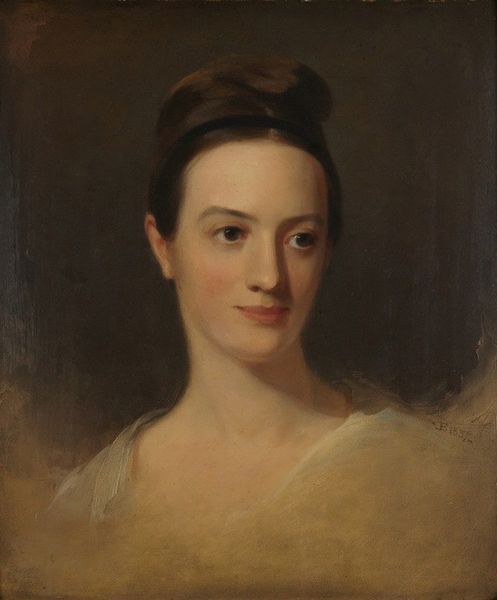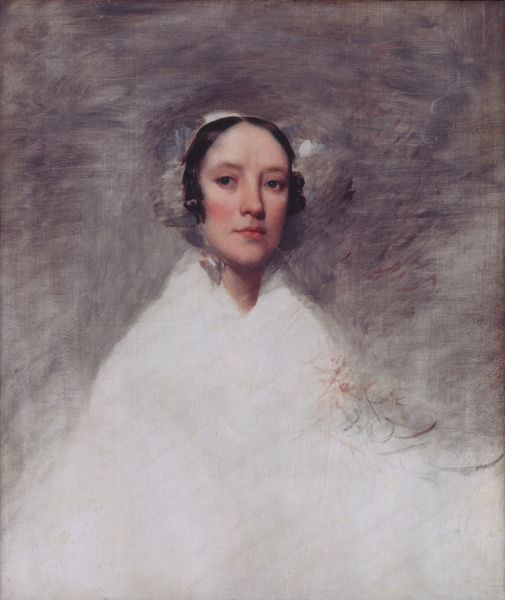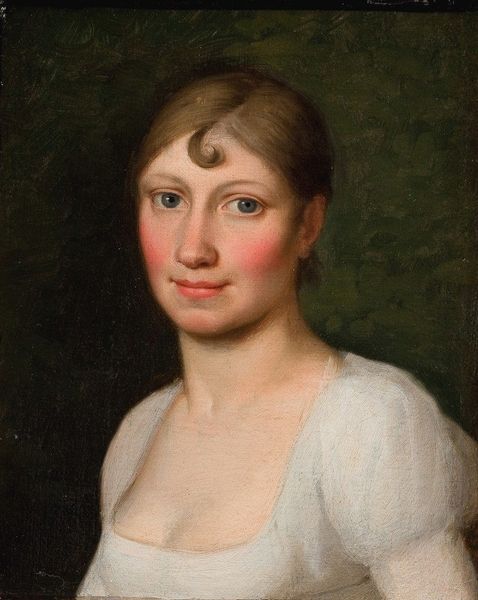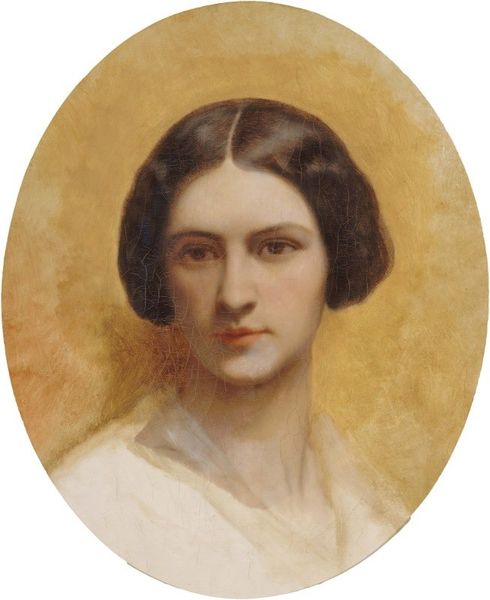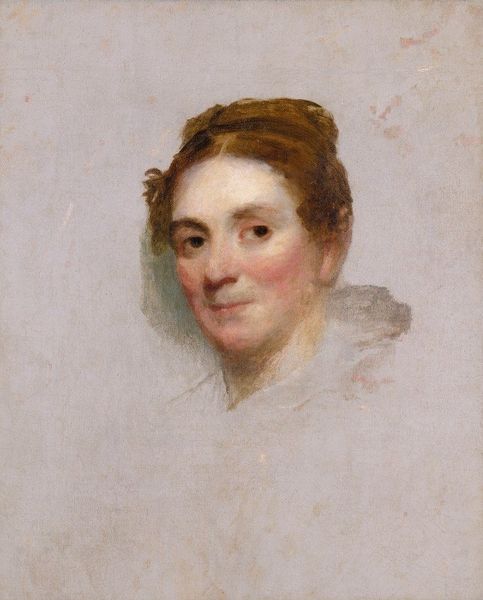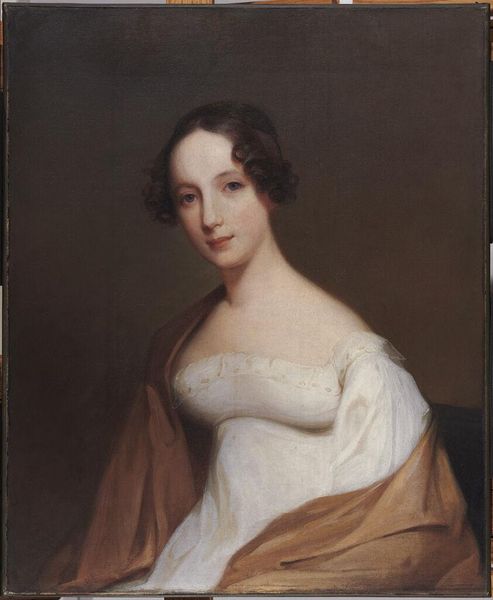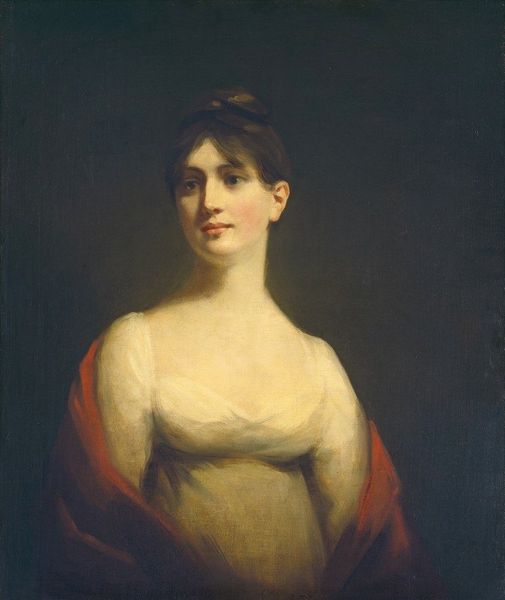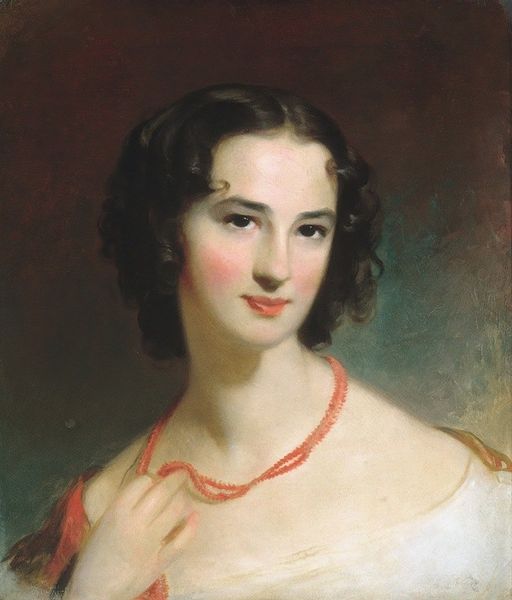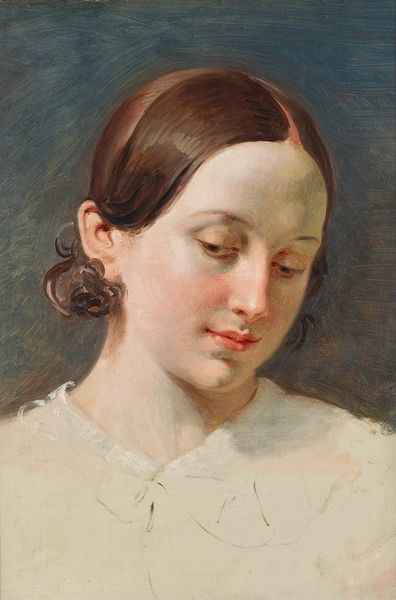
painting, oil-paint
#
portrait
#
portrait
#
painting
#
oil-paint
#
romanticism
Copyright: Public Domain: Artvee
Curator: This is "Blanche Sully," an oil painting executed in 1834 by Thomas Sully. Editor: She's arresting. A sort of quiet, melancholic beauty seems to emanate from the canvas. And look how softly the light plays across her face! Curator: Absolutely. The canvas, while mostly obscured by paint, is a fine weave, which suggests the artist's aspiration to create a highly polished, 'refined' product to suit emerging middle-class tastes for portraits. Sully, known for his facility, often reused canvases—perhaps economy or practicality played a role? Editor: It is interesting to see how portraiture evolved as an affordable luxury for an upwardly mobile gentry. Speaking of visual symbolism, notice the sitter's plain white dress. It evokes purity and simplicity, traits that were highly prized for women during this era. This, along with her smooth hair, gives us insights into period and personality. Curator: Indeed. But the actual creation of such “simple” beauty involves a very complicated process. Sully, a working artist who also managed to be 'fashionable,' skillfully blends pigments and brushes them on layers—each layer serves its unique purpose from contour to highlights to luminosity. A far more intricate activity, the artist's hand in the painting is what draws people to art! Editor: Very true! Also notice the lack of ornamentation, or even much detail around her clothing or the background. This concentrates our focus on the subject's face, where all the expressiveness is concentrated. It adds to this woman's intriguing character and quiet introspection. Perhaps Sully did so to create a personal or allegorical message through simple aesthetics. Curator: Exactly! The lack of ornamentation also served practical production constraints. Each mark is economical while retaining lifelike characterization, essential for achieving social likeness while streamlining costs. The value resided less in lavish depiction and more in evoking status through careful brushstrokes, thereby defining not only aesthetic appeal but social narratives too! Editor: It certainly shows that even "simple" portraits often hold immense cultural value! This exercise certainly allowed us to reconsider that beauty—not just in subject matter, but from brushstrokes to social implications! Curator: Precisely. It also sheds light on how material circumstances and skill combined to shape not just artwork, but the meaning they conveyed in the nineteenth century.
Comments
No comments
Be the first to comment and join the conversation on the ultimate creative platform.

